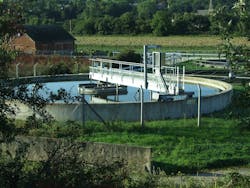Demand for Water Treatment Chemicals to Reach $31 Billion by 2017
Demand will be driven by rising water quality standards in manufacturing and other industrial applications, expanded access to safe drinking water in underserved regions and a shift toward higher value chemicals with improved performance and/or environmental profiles, particularly in developed countries. Advances will be the fastest in developing parts of the world due to healthy economic growth and tightening environmental regulations. However, despite the shift in demand toward higher cost products, increases in developed countries will be tempered by greater competition between chemicals and equipment.
In developing regions, rising standards for industrial water quality and the adoption of more complex manufacturing processes, along with healthy economic expansion, will drive strong growth in demand for water treatment chemicals. In many developing countries, the use of water treatment chemicals has historically been low relative to use rates seen in manufacturing and industrial markets in more affluent areas, and rising water treatment chemical use rates will be reflective of greater reliance on both commodity-type chemicals and specialty chemicals. The increased use of water treatment chemicals in these regions will be supported by manufacturers' efforts to remain competitive by improving the quality of finished products, which can be directly impacted by water quality.
Growing environmental concerns and increased efforts to modernize municipal water treatment facilities will also support demand for water treatment chemicals in developing areas, as regulations regarding wastewater management and municipal water standards become more stringent. In many developing areas, where wastewater management has historically received less attention than process or supply water treatment, new wastewater quality requirements will promote increased use of water treatment chemicals to remove pollutants before wastewater is discharged to the environment or is reused. Increased investments in municipal water infrastructure in developing countries will also boost higher demand for water treatment chemicals, as governments seek to improve access to safe drinking water supplies and sanitation facilities.
In developed regions where the utilization of water treatment chemicals is well established, growth in demand for water treatment chemicals is expected to be more moderate and the shift in product mix will be more complex. For example, higher industrial water quality standards and environmental regulations worldwide are expected to support demand for water treatment equipment, which can be used to partially replace some chemicals such as biocides but can also support the use of higher-value specialty corrosion inhibitors, scale inhibitors, and coagulants and flocculants. These chemicals can be used to promote and protect equipment function. However, because water treatment equipment cannot fully replace the use of water treatment chemicals, users in more affluent areas have been turning to lower-dose, higher cost specialty chemicals, contributing to modest value growth in water treatment chemical demand.
Source: PRNewswire
